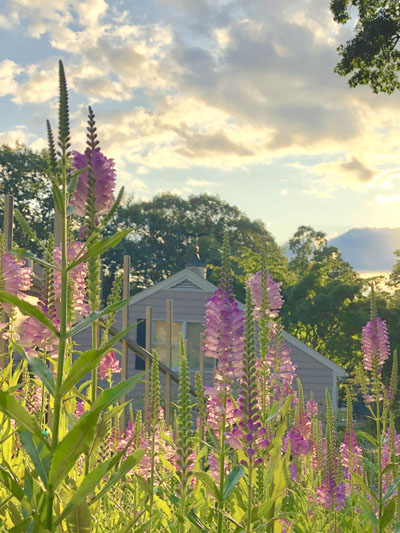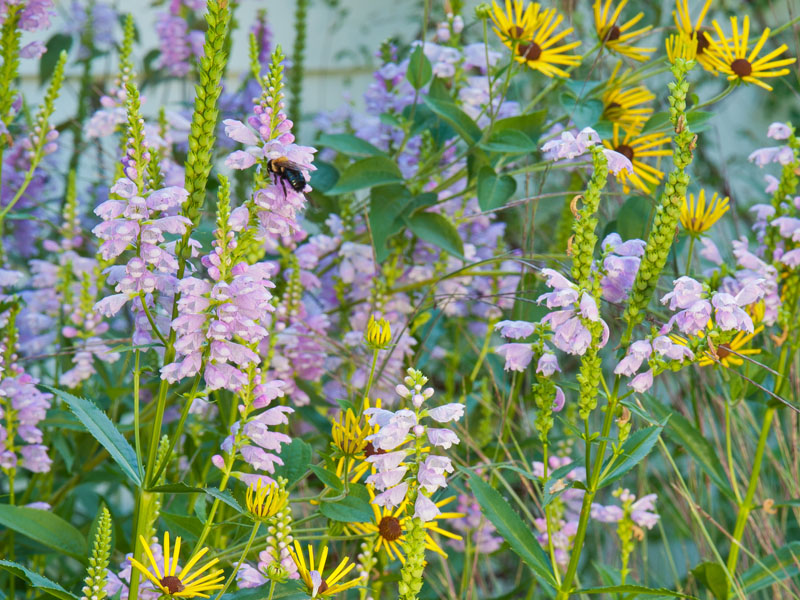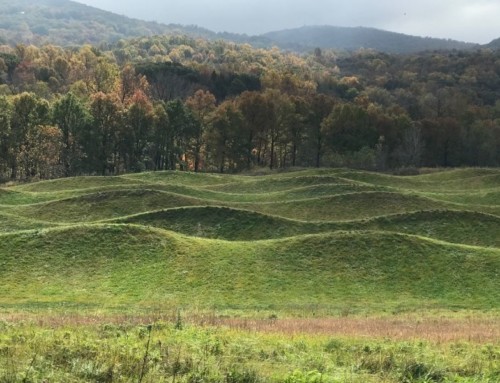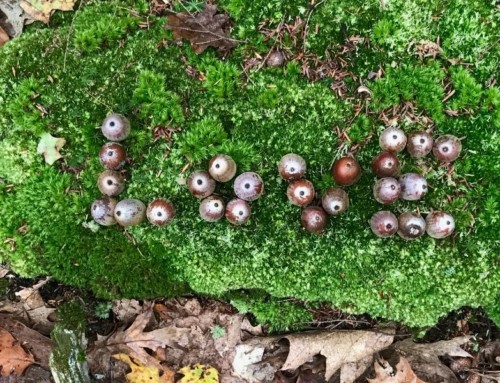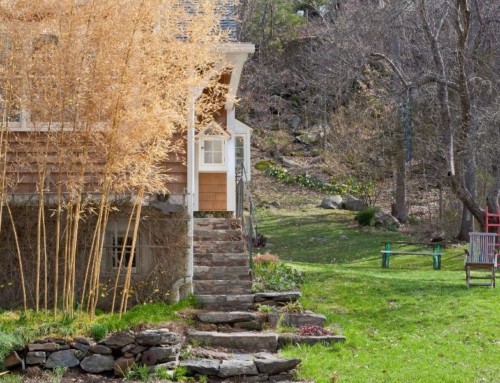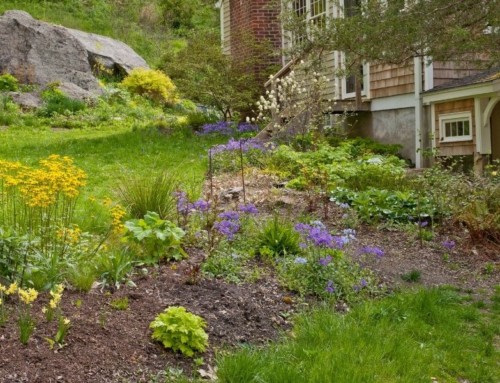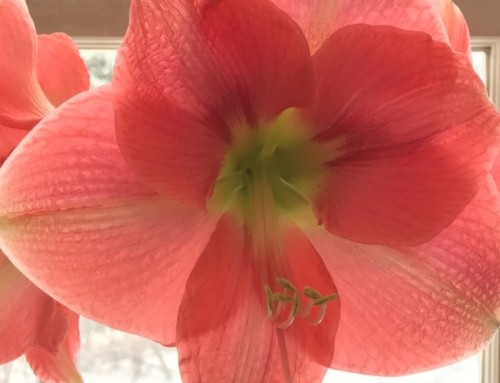Once upon a time, many years ago, a friend gave me a clump of obedient plant (Physostegia virginiana) with the warning, “watch out, it’s aggressive.”
I figured I’d give it a try even though it had pink flowers. As the only girl in the family, I’d had enough pink thrown at me when I was young and defenseless to last a lifetime. (Color is so personal!)
Sure enough, this native perennial colonizer spread fast, and barreled right over its shorter neighbors. It wasn’t a fair fight. My fault, although at the time I blamed the plant. I ripped it out and forgot all about it.
Until I met a new garden coaching client – let’s call her Beth, for that’s her name.
Beth has an artist’s eye and commitment to making her suburban yard a refuge for pollinators and birds.
Her big bed of Physostegia virginiana totally changed my perspective.
Now this stalwart native tops my list of plants that are beautiful, support wildlife and solve problems.
OBEDIENT PLANT (PHYSOSTEGIA VIRGINIANA) 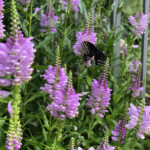
- Provides nectar for hummingbirds, butterflies, numerous bee species and other insects
- Supplies pollen for medium-to-large bees, especially bumblebees. (Small insects seeking sweets slip right past pollen-covered anthers on the snapdragon-like flower’s upper lip)
- New flowers open along bloom stalks as earlier ones fade for two months
- Is deer-resistant – I’ve never seen a single munch
- Has a wide native range (Quebec to Florida, west into Minnesota and Texas)
- Grows in sun, part shade and shade
- Occurs naturally in damp to mesic (moderately moist) soils and is recommended for streambanks and rain gardens, but I’m seeing great success in dry, full sun locations
- Combines splendidly with tall fall-blooming perennials like Rudbeckia subtomentosa ‘Henry Eilers’ (photo above, in the sunny border I planted for Beth), asters (Symphlotrichum oblongifolium ‘October Skies’) and lofty prairie grasses.
- Spreads by rhizomes, which make it a great plant for covering ground, suppressing weeds and stabilizing soil.
- Is easy to pull out where you don’t want it. Single stems are anchored by shallow rhizomes. You can pull it out by hand, stick it in the ground somewhere else and it doesn’t skip a beat.
A TALE OF TWO SITES
Left untended, a “wild” garden with tall native plants can easily cross the line between intentionally natural-looking and messy.
It takes tweaking to keep it pleasing.
We mingled and massed, planted small groups, drifts and individuals in Beth’s sunny front garden, to get both variety and cohesiveness. An existing patch of Physostegia virginiana fit nicely into the design – and quickly asserted its outgoing personality.
You don’t need to be delicate with this plant.
When it crowded other plants, I simply yanked it out, one stem at a time, jiggling a bit to tease out a chunk of the main root and rhizomes, until there was comfortable breathing space. Fine-tuning is fun – and ongoing.
PHYSOSTEGIA TO THE RESCUE
Beth’s surplus led to Leon’s delight, and new ways to engage with nature.
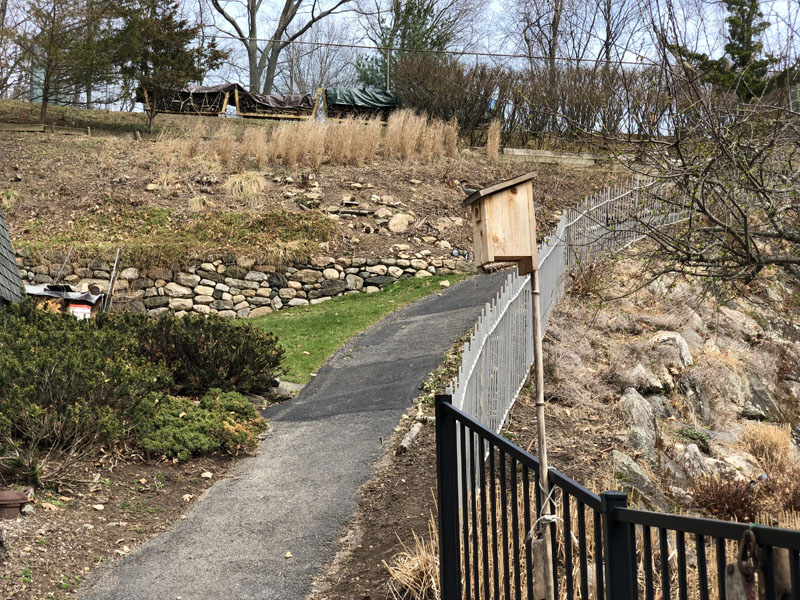
Leon’s steep, erosion-prone back yard
Leon had a big backyard problem – a horrendous, treacherous, ridiculously steep unplanted slope where a mass of ugly half-dead shrubs had been torn out.
It went up and up and up and up. And then up some more.
Dust devils and mudslides deposited soil in the pool below the boulder retaining wall. The asphalt path became a raging torrent every time it rained.
We needed to stop water, starting at the top. This meant unclogging drains, diverting water where we could, slowing it down at every opportunity and covering ground with tough plants.
The dried grasses in the photo above are stage one of a native meadow. We pinned in burlap erosion control fabric and planted small plugs of various native colonizers throughout – holding on with one hand, it was that steep!
Suckering, self-layering fragrant sumac (Rhus aromatica ‘Grow-Low’) holds the steepest, sunniest part. Leon “planted” logs and rocks every whichway to further stabilize soil.
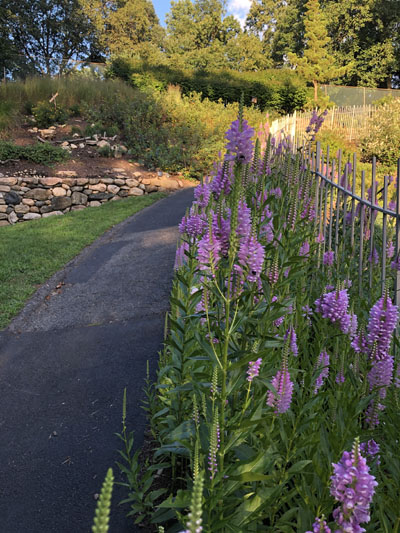
Physostegia virginiana thwarts erosion
To the right of the path – Physostegia virginiana to the rescue! I cut back Beth’s extra plants and gave them to Leon. By the next year, plants had spread nicely through the fence, stopping erosion in that area.
Leon was perfectly fine with pink flowers, especially free ones, with so much bare ground to cover.
To his delight, butterflies came, and bees, and hummingbirds, and in winter, seed-eating songbirds – endless opportunities to enjoy and photograph the life that appears when you fill your yard with native plants.
He recently wrote
They keep growing and get more beautiful by the day.
Was walking along the path this weekend and used my phone to capture these few photos. I was sitting down halfway up the path pulling some weeds late in the day. When I turned around I was looking up at the Physostegia – a perspective I normally wouldn’t see – and it made them look so tall and majestic.
I had two takeaways…
1) weeding has benefits beyond just getting rid of the weeds and
2) it reconfirms what a photographer once told me…after you’ve taken a photo always turn around and look at what is behind you.
